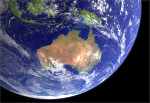In 1949, I used to walk down to the Glenferrie Oval and watch the Hawks play pre-season practice
matches and their home games in the regular season.
In 1952, I was working after school at Landmann's chemist shop, across the road from our house in
Auburn. One of the chemists was a sem-retired gentleman, who was a member of the Hawthorn FC Committee. He used to let me
have a free ticket for each home game the Hawks played at Glenferrrie.
I left my chemist round in 1954.
Between 1950 and 1956 I attended nearly all of the Hawks' matches, but the games at Geelong were
hard to get to!
Glenferrie Oval (still there!) is a long skinny ground with a maximum capacity of 35,000 spectators.
I had a favourite seat in the main grandstand - sometimes I would stand at the eastern end behind the goals or in front of
the stand..
In 1953 and 1955 I kept a scrapbook about all of our games, with the pages made of brown paper
stitched together. I cut out the stories from the Melbourne Argus newspaper and pasted them into my scrapbook - I still have
that scrapbook!
The Hawks started out in 1902, and entered the VFA In 1914. In 1924, they entered the VFL as part
of an expanded competition, when the number of teams was increased to 12, from the previous nine.
In the 1940s and early 1950s they quite often went through a season without winning a game. However,
by the mid-1950s, successes started to happen, leading to our first premiership in 1961. Nine Premierships would follow until
our most recent in 2008!
We made the Finals for the first time in 1957 and finished third.
Between 1956 and 1971, the VFL conducted a midweek night-series competition, which was held at the Lake Oval, South Melbourne.
The Hawks won the 1969 Grand Final!
I went to many of the night games in which we were playing - in the late 1950s I would take the train to Albert Park
Station after leaving work, and visit my grandmother for tea. I would then walk down to the ground and watch the action!
In 1974, the Club left the cramped Glenferrie Oval in favour of sharing Prince's Park with the
Carlton Club, just north of the city. This was not entirely satisfacfory, as our supporrt base was in the eastern suburbs.
In 1992 we moved to the newly built Waverley Park (VFL Park) in Glen Waverley, where we played our home games until 1999,
when the venue was closed down. We then transferred our home games to the MCG.
The original main grandstand survives at VFL Park, and we now use the facility as our main admiistration
and training centre.
Glenferrie Oval is now maintained by Boroondara Council and is used for Family Days for the Hawks,
sporting events by local schools, and as a multi-use training ground for nearby Swinburne University of Technology and other
colleges. The goal posts are still there, but the eastern and southern "outer" spectator areas are now occupied
by tall trees.

